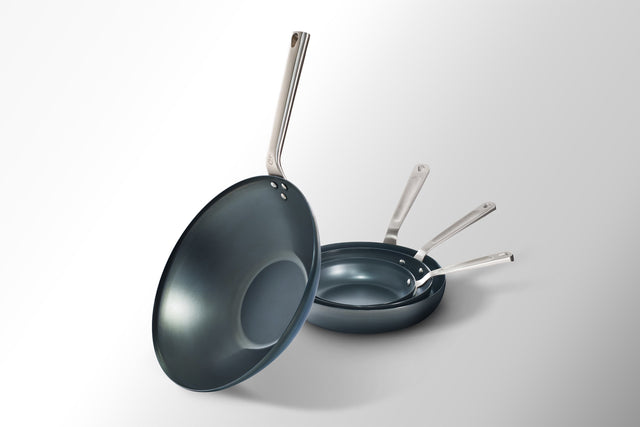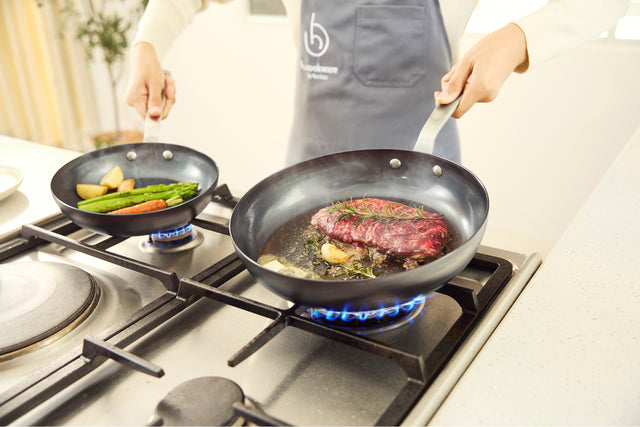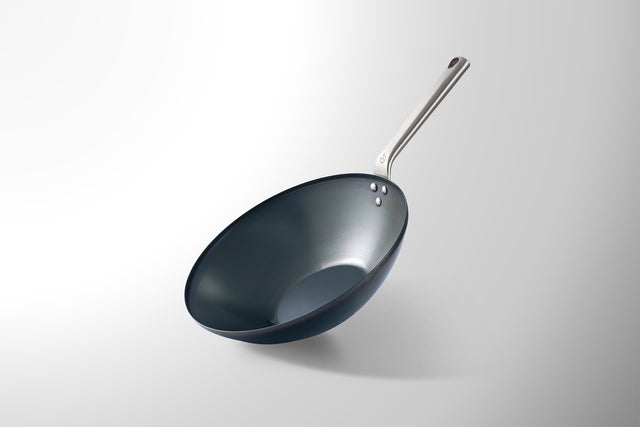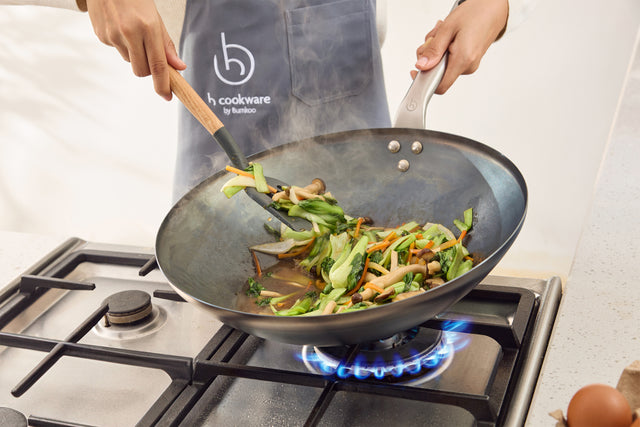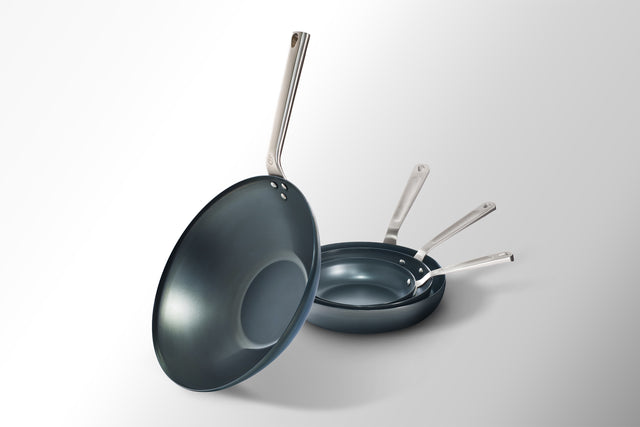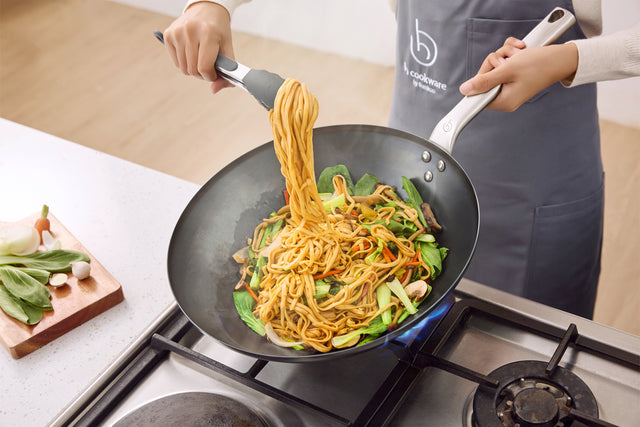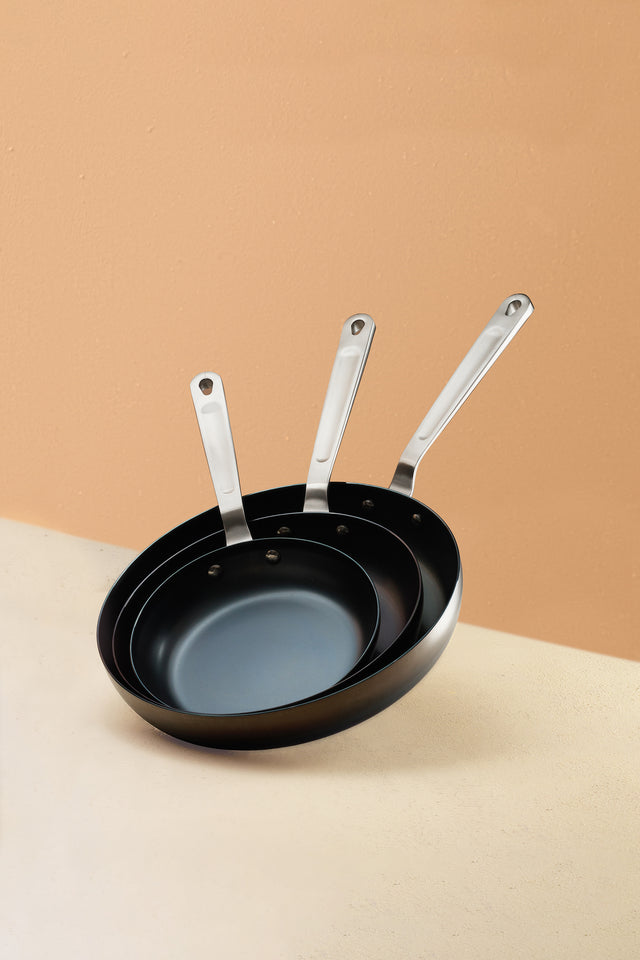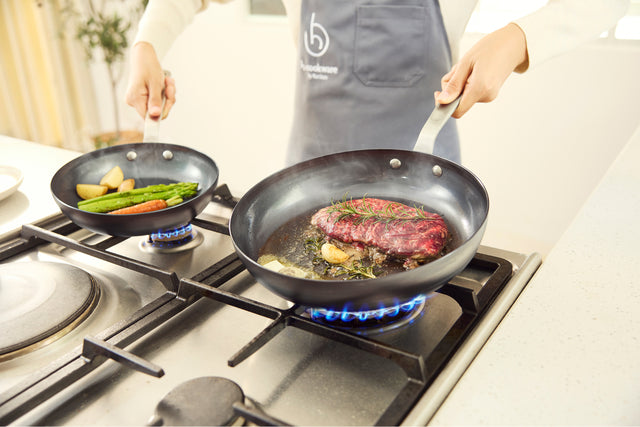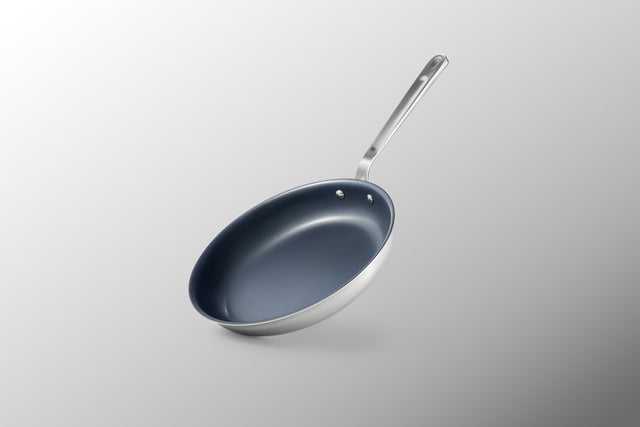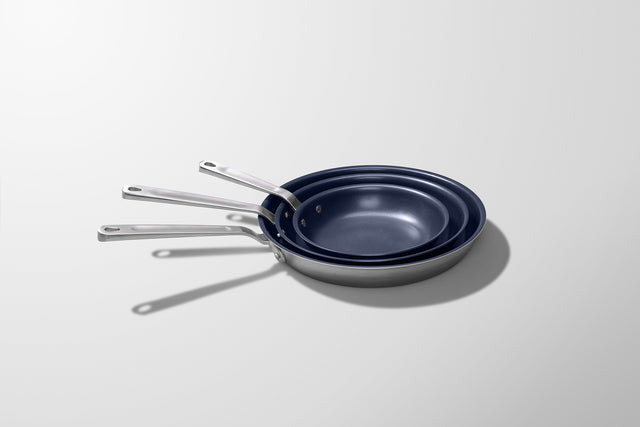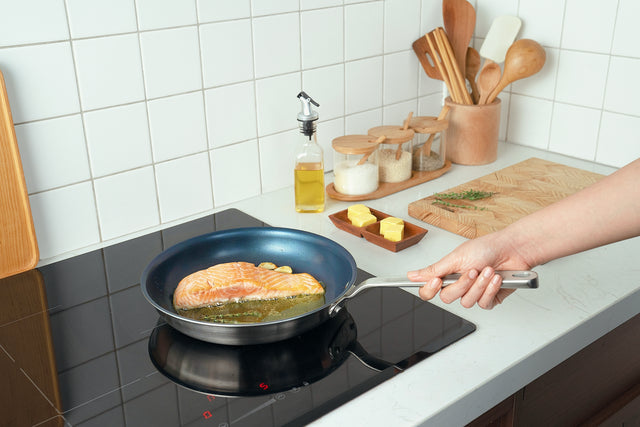Choosing the right frying pan can feel like a daunting task with so many options available. Whether you’re a seasoned chef or just getting started in the kitchen, the material you choose–carbon steel, stainless clad, or nonstick–can make all the difference. Each has its own unique properties that cater to different cooking styles and preferences. Let's break down the pros and cons of each to help you find the best fit for your kitchen.
Carbon Steel Frying Pans
Why Choose Carbon Steel?
Carbon steel pans are a favorite among professional chefs, and for good reason. They can handle high heat, which makes them perfect for searing, sautéing, and frying. Over time, these pans develop a natural nonstick layer that not only enhances their performance but also adds a personal touch to your cooking as the pan becomes uniquely yours.
Pros:
- High Heat Capabilities: Carbon steel can withstand and retain high heat, making it ideal for achieving that perfect sear or quick stir-fry.
- Indestructible: These pans are built to last, and with proper care, they can serve you for decades.
- Develops Nonstick Layer: With regular seasoning, your carbon steel pan becomes naturally nonstick, improving with every use.
Cons:
- Seasoning Required: To maintain their nonstick properties and prevent rust, carbon steel pans need regular seasoning.
- Not Ideal for Acidic Foods: Cooking with acidic ingredients like tomatoes or lemons can strip the seasoning and leave a metallic taste in your food.
Stainless Clad Frying Pans
Why Choose Stainless Clad?
If you’re looking for versatility and ease of use, stainless clad pans are a great option. They’re known for their even heat distribution, thanks to a core layer of aluminum between layers of stainless steel. This makes them a reliable choice for a wide range of cooking tasks.
Pros:
- Even Heat Distribution: The aluminum core ensures consistent heat across the cooking surface, reducing the risk of hot spots.
- Versatility: Stainless clad pans are great for all types of cooking, including acidic dishes, without affecting the pan's performance or the taste of your food.
- Low Maintenance: Unlike carbon steel, stainless clad pans don’t require seasoning and are resistant to rust and corrosion.
Cons:
- Sticking: If not properly preheated or oiled, food can stick to the surface, which might take some getting used to.
Nonstick Frying Pans
Why Choose Nonstick?
Nonstick pans are all about convenience. They’re perfect for delicate foods like eggs or pancakes, where you need a smooth surface to prevent sticking. If you’re looking to reduce oil in your cooking, nonstick is your best friend.
Pros:
- Ease of Use: Food easily releases from the surface, making cooking and cleanup a breeze.
- Reduce Oil Use: Nonstick pans allow you to cook with little to no oil, making them a healthier option for those mindful of fat intake.
- Convenience: These pans require no seasoning and are generally easy to clean.
Cons:
- Teflon: Teflon is an inorganic compound that provides its nonstick properties; nothing else is truly nonstick. For some this is a no-go for health concerns when the surface starts to flake off.
- Coating Wears Off: Over time, the nonstick coating wears down and will need to be replaced.
- Not Suitable for High Heat: Nonstick pans aren’t designed for high-heat cooking, and using metal utensils can damage the surface.
Which One Should You Choose?
Cooking Style:
- Carbon Steel: Ideal for high-heat cooking and those who enjoy the process of building a seasoning layer.
- Stainless Clad: Perfect for all-around performance and versatility in the kitchen.
- Nonstick: Best for convenience, especially when cooking delicate foods or reducing fat.
Maintenance:
- Carbon Steel: Requires regular seasoning and careful drying to prevent rust but can last for decades with proper care.
- Stainless Clad: Low-maintenance and durable, this option is hassle-free.
- Nonstick: Easy to clean and use, but the coating will wear out over time and needs replacement.
Budget:
- Carbon Steel: Is more affordable with long-term durability.
- Stainless Clad: Offers a good balance of cost and performance.
-
Nonstick: You pay for its ease of use but it will need replacement.
Conclusion
The right frying pan for you depends on your cooking habits, preferences, and budget. Whether you choose the high-heat capability and seasoning potential of carbon steel, the even heating and versatility of stainless clad, or the ease and convenience of nonstick, each option brings something unique to your kitchen. Consider what matters most to you, and you’ll find the perfect pan to elevate your culinary creations.
Find similar articles:
Buying GuideMore stories

Which is Best: Stainless Clad or Nonstick?
